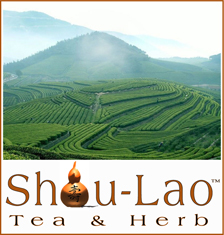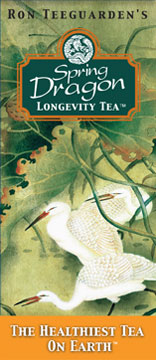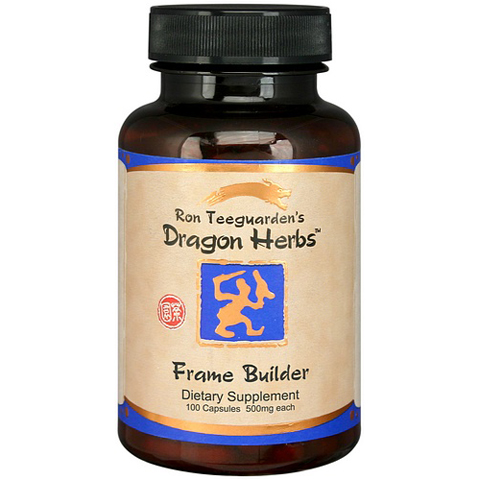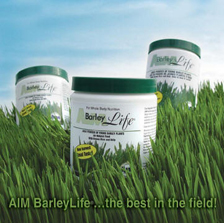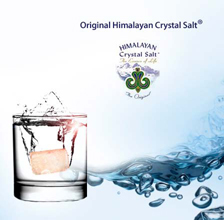Frame Builder
The Maine Herbs in Frame Builder
Eucommia Bark
Eucommia Bark is thus the quintessential example of a safe, mild and potent Kidney tonic that builds Jing, Qi and Shen, with an emphasis on its quintessential Jing building capability.
Eucommia Bark's first fame is in its Kidney tonifying effects. It is in fact the primary herb in Chinese tonic herbalism for building a strong, sturdy, skeletal structure and strong, flexible joints. It is used to strengthen the bones, ligaments and tendons, and has been used for centuries to help mend damage to these tissues, whether the damage is due to stress, age or trauma. Eucommia Bark is also the primary tonic herb of choice to strengthen the lower back and knees. Traditionally, it has been used to help with problems in the joints, including pain, stiffness, dislocation, swelling and weakness*. However, it is not a mere “remedy.” It is a tonic herb that strengthens structural tissue and improves structural competency at a fundamental level. Therefore, it is preferably used as a tonic herb to maintain the structural integrity of the body so that breakdowns in this system are much less likely, even as we age or are exposed to stress.
Drynaria Rhizome
Drynaria Rhizome tonifies the Kidney, promotes mending of bones and related structural tissues and stimulates hair growth. Drynaria is considered to be the most important herb in the Chinese pharmacopoeia for healing damaged bone and ligaments. It is used in all formulas for broken bones and torn ligaments. It is also useful in the treatment of and recovery from sprains, contusions (bruises) and stress fractures. Drynaria has been explored deeply by martial arts practitioners in Asia for over a thousand years and its efficacy is very well established. In fact, the literal name of the herb in Chinese is “Mender of Shattered Bones.” Drynaria is usually used in combination with Dipsacus and other herbs to deal with the specific problems. Drynaria can be used like all Yang Jing tonics to strengthen the lower back and knees. It seems to have special efficacy in a high percentage of cases of tinnitus (ringing in the ears) and bleeding gums. Though it is traditionally considered to be effective for toothaches, I recommend you get to the dentist and get the problem fixed.
Dipsacus Root
Dipsacus Root tonifies Kidney and Liver, helps repair bones and ligaments, and opens the blood vessels. This Kidney tonic is primarily used to strengthen the skeletal structure. Dipsacus is one of the main herbs used in case of traumatic injury to the skeleton. It is an excellent herb for repairing structural tissue (bones and ligaments) that have been damaged as a result of trauma. Dipsacus helps relieve the swelling due to structural trauma. It is the perfect herb for those who have damaged spinal structure and for those who have experienced knee injuries. However, it is useful for any structural tissue damage to hasten repair. Thus Dipsacus is a premium herb for athletes, dancers and others who have experienced minor or severe structural injuries as a result of their activities. It can be used preventatively by those who have had previous injuries or by those who are involved in dangerous activities and may wish to do all that they can to fortify the structure of the body. It is equally effective for older people who are experiencing structural difficulties simply due to aging. Dipsacus is usually combined with Eucommia, Drynaria, Dang Gui and sometimes Deer Antler. Dipsacus performs some of the classic Kidney tonic functions as well. It helps strengthen sexual function and relieves back pain. Dipsacus is a very safe herb and is routinely used during pregnancy in Asia to strengthen the mother’ back and to calm the fetus. Dipsacus also helps improve blood flow by opening up the blood vessels. Therefore it is useful in any condition in which the blood vessels are constricted especially when the constriction results in pain.
Morinda
Morinda is an excellent Yang essence tonic. It is considered to be highly nutritious and is used in superior tonic formulas for strengthening the body. It is widely used in primal essence formulations, often as the main ingredient. Morinda is widely believed in China to increase mental power. It is also considered to be beneficial to the heart. And like many other Yang tonic herbs, it has been shown to be effective in treating hypertension (not a function of this formulation). It is one of the finest Yang tonics since it is not only powerful but extremely well tolerated by almost every one. It is a superb athletes herb and ranks among the most important vitalizing herbs of the tonic system. It is likewise considered a major longevity herb and is a regular ingredient in Taoist formulations.
Adjuctive Herbs
Cistanche, Lycium, Poria, Dioscorea, White Atractylodes and Licorice are all major tonic herbs that help strengthen the body by building Jing, Qi and Shen. Stephania, Angelica anomala, Liquidamber, Notoptergium, Clematis, Achyranthes and Chaenomeles all play important roles in reducing swelling and promoting healing of skeletal and structural tissue.
How Eucommia Helps Maintain Strong Bones
Bone Remarkably Active Metabolically
Bone is a quintessentially important living tissue in the human body. Bone matrix functions as a reservoir of essential ions such as calcium, phosphate, magnesium and sodium. About 70% of the bone matrix is made of inorganic salts, principally salts of calcium and phosphate. 99% of the calcium in the body is stored in the bones. The enormous compressional strength of bone is derived from crystals formed from these salts.
Despite its apparent inanimate nature, bone is remarkably active metabolically. Old or damaged bone is constantly resorbed (dissolved) and replaced with newly generated bone. This continuous breaking down and rebuilding is called the bone remodeling cycle. In an adult, 3 to 5% of the total skeleton is being actively remodeled at any one time to adjust to the changing environment and physiological demands. More than 5% of a normal healthy adult's bone mass is naturally replaced every year. The equivalent of your entire skeletal mass may be replaced every 10 to 20 years – 12 years being the estimated average.
The equivalent of your entire skeletal structure may be replaced every 12 years. Coincidentally, the Chinese zodiac has a 12 year cycle. The year of your own zodiac sign is called your Ben Ming Nian, or “year of original life”. This year marks a milestone in your life’s journey. It is suggested that you exercise caution this year as you will experience some major changes, good or bad, in your life. However, it is an auspicious year in which you can grow by quantum leaps, so you may have an opportunity to play your best hand in this year.
Could it be that 12 is a magic number? Bone’s metabolic cycle is 12 years. Bone is considered to be the least active part of our body, and yet, every 12 years, we get a whole new set of bones. Life is a living cycle that requires constant changes and maintenance. Make sure you are doing something positive about your bone heath every day. Personal growth does not get more skeletal than this.
Insert a clock with the 12 signs as the hour sign. Somewhat symbolizes the biological clock. I still have to work on the wording a little.
Yet despite these changes in bone form and size, the ionic concentrations in cells and in blood remain constant. The regulation of these ionic balances is largely dependent upon hormones. Maintaining a precise level of calcium within your blood is essential to survival. Too little or too much calcium will make the heart unable to beat. The release and uptake of calcium is controlled by regulatory hormones. The bones act as a reservoir for this essential mineral.
As much as one fourth of bone phosphate may be replaced by new phosphate within two months! This turnover rate is even more rapid, of course, in actively growing children.
Inorganic crystals give bone its compressional strength, but the organic matrix, which makes up the remaining 30% of bone matrix, provides its tensile strength. Collagen is the major structural protein in human bone. 90% of the organic matrix is formed by collagen fibers. The collagen fibers are surrounded by a substance containing chondroitin sulfate, hyaluronic acids, various proteins and mucopolysaccharides (See Deer Placenta, page……).
The combined tensile strength of the organic matrix and the compressional strength provided by the inorganic hydroxyapatite crystals give bone a strength that is comparable to that of reinforced concrete.
Women are more prone to bone loss as they get older than men. Bone resorption may begin to outpace bone formation after approximately age 30 in women. Nearly 50% of American women in their 30s and 40s are at risk for osteoporosis, a condition that occurs when bone becomes too weak. At menopause, when the ovaries stop functioning, the withdrawal of estrogen causes a loss of calcium from the bone matrix with a consequent loss of bone strength. The remodeling of bone, even in old age, continues as a balance between bone formation and bone resorption. For most women, bone health must be supported by conscious eating and supplementation.
Nearly 50% of American women in their 30s and 40s are at risk for osteoporosis, a condition that occurs when bone becomes too weak.
Bone formation remains normal in postmenopausal women, but the accelerated bone resorption weakens the bones by decreasing their mass. Generally, bone resorption in postmenopausal women significantly exceeds formation. The activity of the osteoblasts cannot keep up with the activity of the osteoclasts. As a result, women begin to lose bone more rapidly. If the bone loss is severe, they are at increased risk for developing osteoporosis and for suffering fractures caused by even relatively mild trauma, such as tripping. Men do not lose bone nearly as rapidly as women because men continue to secrete testosterone as they age, though in diminished amounts. If men consume certain herbs, such as Tongkat Ali, Deer Antler and Tribulus, and boost the activity of these herbs by taking them with the alcohol extract of Eucommia (Eucommia Drops) they may improve their testosterone producing ability and testosterone profile even as they age.
Bone matrix:
70% inorganic -- salts of calcium and phosphate -- Compressional strength
30% organic --mostly collagen fibers -- Tensile strength (the strength to handle stretch without breaking)
There are three types of cells that maintain the skeleton: osteoblasts, osteoclasts and osteocytes.
Osteoblasts:
A blood cell that produces bone tissue. It does so by moving along the surface of bone, producing a matrix that then forms bone. Osteoblasts are always present in the body and are constantly active in repairing and rebuilding bone. Osteoblasts are involved in the regulation of calcium and phosphorus exchange and deposition. Osteoblasts have many fine filaments that enter bone through numerous microscopic canals and extend through the bone matrix. In this way the osteoblasts transport calcium to the bone matrix from the blood.
Osteoclasts:
A blood cell that produces bone tissue. It does so by moving along the surface of bone, producing a matrix that then forms bone. Osteoblasts are always present in the body and are constantly active in repairing and rebuilding bone. Osteoblasts are involved in the regulation of calcium and phosphorus exchange and deposition. Osteoblasts have many fine filaments that enter bone through numerous microscopic canals and extend through the bone matrix. In this way the osteoblasts transport calcium to the bone matrix from the blood.
Osteocytes:
During the process of building bone, some of the osteoblasts are trapped or “imprisoned” by the newly formed bone matrix that they are building. Osteocytes live for a long time within the bone, and remain quite functional, but in a different way. They communicate with the blood stream by means of fine filaments. The exact function of osteocytes is still being studied, but they appear to be acting as sensors, communicating information on the state of the bone to the other cells. They are believed to play a profound role in regulating the building and resorption of bone.
The Yin & Yang Of Bone Maintenance
In normal bone, bone formation and bone resorption – opposing functions typical of the yin and yang activity that defines all life functions – are closely coupled processes involved in the normal remodeling of bone. Normally, these processes are regulated in such a way that normal growth can take place and bone structure can be properly maintained in adults. If this balance goes awry, an “illness” will develop. In osteoporosis, for example, the net rate of bone resorption exceeds the rate of bone formation, resulting in a decrease in bone mass without a defect in bone mineralization. In women, osteoclast activity is increased because of decreased estrogen after menopause. Men with prematurely decreased testosterone may also have increased osteoclast activity. These changes result in a net loss of bone. The amount of bone available for mechanical support of the skeleton eventually falls below the fracture threshold and one may suffer fractures.
Osteoblasts and osteoclasts work in harmony to maintain a healthy bone structure, and osteocytes are the sensors that maintain that harmony. In the bone-building process, the functions of osteoblasts and osteoclasts are intimately intertwined, with each cell releasing chemicals that influence the other. Osteoblasts resorb bone in front of the osteoclasts. As the bone is resorbed, the osteoclasts release signaling molecules called cytokines that attract osteoblasts and encourage them to start laying down new bone. The osteoblasts then incorporate small proteins into the bone matrix that they create. This harmonious functioning results in smooth bone formation.
Why does the body spend so much energy on bone remodeling? The primary reason is so that the bone can adapt to different stresses that are placed on it, especially thickening it in areas that are under great load. The second reason for remodeling is so that the bone is able to resist fatigue stress. Repetitive stress on any structure will cause it to fail. Through perpetual remodeling, the bone is able to repair small microscopic fractures before they develop into major fractures. A third reason is that the process allows for the ready transfer of calcium into the blood stream when needed for other functions. A fourth reason is that young bone protects the deep inner functions of bone best, that is, the functions associated with bone marrow production and its networking with the bloodstream.
Eucommia's Effect On Bone
Eucommia Bark, Seed and Leaf has been used since before the time of Shen Nong, well over two thousand years ago, to strengthen bones and to heal fractures. Scientists now are gaining understanding of the action of Eucommia in this regard .
Alcohol (methanol) and aqueous (water) extracts of Eucommia bark were tested for their therapeutic efficacy on osteoporosis. The results showed that Eucommia bark has powerful activity with regard to regulating bone remodeling. The components of Eucommia bark are thought to participate in each step of a mechanism for activating osteoblasts to facilitate osteogenesis (bone building), and suppress osteoclast activity sufficiently to inhibit osteolysis (the excessively active resorption or dissolution of bone).
The hormone tonic effects of Eucommia may play a significant role in its bone strengthening functions. Human Growth Hormone is known to play a role in bone growth. Insulin plays a role, in concert with HGH in building bone, and Eucommia has been shown to mitigate type 2 diabetes in rats, indicating that it may have an ability to affect insulin. And Eucommia has androgenic actions that influences bone structure through multiple pathways. Testosterone spurs bone growth and calcium deposition, thickening and strengthening the bones.
Traditionally, Eucommia bark is used as a tonic to the skeleton. The apparent ability of Eucommia bark to stimulate bone growth and to mitigate excessive bone loss apparently supports this usage of Eucommia as a bone tonic.
Tips For Good Bone Health
The proper diet plays a major role. We should eat foods and consume tonic herbs rich in calcium, magnesium, zinc and other minerals, and take a mineral supplement if necessary. Limiting or restricting the consumption of carbonated soft drinks, caffeine, sugar and table salt reduces calcium excretion and therefore lead to stronger bones. Weight bearing exercise also strengthens healthy bone, though this must be carefully monitored in the cases where bone has already weakened significantly.
There is growing evidence that exposure to microwaves increases demineralization of our bone. The significance of this is not yet fully defined, but health care professionals are growing increasingly concerned about the amount of microwave exposure most of us experience in the modern world. It is best to limit exposure to microwaves.
Pearl provides calcium, magnesium and manganese that are very important in the formation of bones. Pearl has been widely used in Asia as a natural calcium supplement and a beauty tonic. The only “side effect” of Pearl is that it adds a beautiful lust to the skin. We will feature Pearl in the product section to complete a bone health program. Draw information from the Pearl article written long while ago.
Indeed, our daily activities impact our bone health everyday. Bone health is something that can be under our control and is closely connected to our biological aging. Early bone degeneration is a sign of premature aging. Hence tonic maintenance can be extremely important in not just our bone health, but in our total body health.
Traditional Function: Nourishes blood, fortifies Yang, moves blood and Qi, disperses stagnant fluids, fortifies the skeleton.
Who Can Use It? Anyone.
Concentration: 8:1
Specifications: 100 capusles, 500 mg each
Ingredients: Eucommia bark, Eucommia seed, Drynaria rhizome, Dipsacus asper root, Chaenomeles lagenaria fruit, Chinese Yam rhizome, Liquidambar orientalis, Bai-zhu Atractylodes rhizome, Chinese Clematis root, Fragrant Angelica root, Poria sclerotium, Achyranthes root, Notopterygium root.
Other Ingredients: Vegetarian capsules (Pullulan caps 100% natural, water-soluble polysaccharide produced through a fermentation process; vegetable origin; non-GMO; no starch, preservative or chemical modifications; gluten free.), rice powder.
Usage: Take 3 capsules, 2 times per day or as directed by a healthcare professional.
